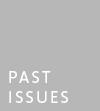Media art is continually re-delineating its definitions of materials and contexts within the new modalities in which it operates.
It has traditionally maintained a commitment to engage with emerging technologies, analysing how they affect all areas within the arts and in turn other disciplines. The development of inter and trans-disciplinary approaches across these areas is increasingly paving the way for participation in the science, culture and technology industries.
“Media art has traditionally been involved with emerging technologies and now through its very own medium it is historicizing itself. In a period of rapid change methodologies for handling the huge quantities of recorded information found in today’s creative arts are gradually emerging. The archivists can now, with web 2.0 develop a solid knowledge of ranges of professional principles, as well as an understanding of the risks and opportunities of new approaches.” [1]
Today there appears to be a need for improved collective knowledge and resources about media arts, particularly from a research methodologies perspective. As stated in the Draft Leonardo Education Forum Strategy Summary, “An international platform for intelligence gathering on benchmarks and standards for new media art education is also needed.” [2]
There is also a need to consolidate the classification and evaluation of new media art, for example articulating the meaning of the concepts like “practice based” and “practice led” research. [3] Collaborative practice has furthered our reliance on digital archiving and data basing research findings. This is due to the speed at which knowledge now evolves and the great distances that researchers often collaborate from. As new media art incorporates a greater number of resources its need for more comprehensive data accessibility develops.
Digital archiving is not the same as data backup – rather, it is intended for long-term storage of digital content that may not be used every day, but still needs to be easily accessible. With digital archiving every bit of information is broken apart, encrypted and stored in separate, remote locations. Without these valuable resources and research the information could be lost, deleted or difficult and slow to source.
The National Organization of Media Arts Database (NOMAD) was established in 2008 to become a comprehensive and current body of literature on the evolving area of Media Art within tertiary education. NOMAD provides a social network through Web 2.0 technology that acts as a platform for the creative exchange of ideas, information, curricular models and best practice solutions from across this continually evolving field of study. To complement NOMAD a parallel Media Art Scoping study site has been develop to create a social and cultural archive of media art activities.
“The NOMAD Media art database is an attempt to develop a base of knowledge that will create a platform on which to build new courses, facilities and teaching methodologies.”[5]
The creation of such a community serves the purpose of expanding interdisciplinary research on a national level. The data gathered creates a body of information for promoting and facilitating a knowledge base on the proliferation of media/electronic art through collaboration between academia, media arts organisations and media artists. Such collaborations have the potential to create hybridized knowledge beneficial to emerging areas.[6]
Initiatives such as NOMAD and ANAT’s Synapse database [7] (a major supporter in the establishment of NOMAD) will assist in the development of new media arts practice and trans/cross disciplinary research in general, serving as an important research model for areas including “…Biology, Microbiology, Animals and Plants, Ecology, and Medicine and the Body Physics, Nonlinear Systems, Nanotechnology, Materials Science, Geology, Astronomy, Space Science, global Positioning System, and Cosmology, Algorithms, Mathematics, Fractals, Genetic Art, and Artificial Life, etc”.[8]
These examples from contemporary art practice explore ways in which definitions are needed for the future. These concepts involve new materials that confront the presentation of art, initiating current debates such as the role of new media/electronic art practice within the gallery contexts.
Julian Stadon
Julian Stadon is a PhD student who completed a BA. (Art) at Curtin in 2005, followed by an M.E.A (Electronic Art) in 2007. Julian’s research has included residencies with the Interface Cultures program in Linz; Salford University, Manchester; Human Interface Technologies Lab, New Zealand (HITLabNZ), and at The Fogscreen Research Centre, Finland. Julian lectures in electronic art, and is the Web Developer for the BA (Art) Online degree run through Curtin University. He is a research assistant for the National Organization of New Media Arts Database (NOMAD), and the director of Dorkbot Perth. He has also recently organised Re:Live: The Third International Conference on Media Art History.
References and Read More
[1] Paul Thomas interview dialogue via email, 2/9/2009
[2] DRAFT: Leonardo Education Forum Strategy summary on media art education
http://mass.nomad.net.au/leonardo-education-forum-strategy-summary-on-media-art-education/, 2008.
[3] DRAFT: Leonardo Education Forum Strategy summary on media art education
http://mass.nomad.net.au/leonardo-education-forum-strategy-summary-on-media-art-education/ 2008.
[4] George Legrady, Perspectives on Collaborative Research and Education in Media Arts, in Leonardo, June 2006, Vol. 39, No. 3, Pages 215-218 Posted Online May 25, 2006. (doi:10.1162/leon.2006.39.3.215) © 2006 Massachusetts Institute of Technology.
[5] Paul Thomas interview dialogue via email, 2/9/2009
[8] Wilson, S. (2001). Information Arts: Intersections of Art, Science, and Technology, MIT Press/Leonardo Books.
 This work is licensed under a Creative Commons Attribution-NonCommercial-ShareAlike 3.0 Australia.
This work is licensed under a Creative Commons Attribution-NonCommercial-ShareAlike 3.0 Australia.







Yeah!
[...] https://filter.anat.org.au/issue-71/digital-archiving-for-the-evolution-of-new-media-art/#more-2404 [...]